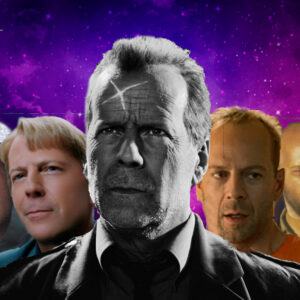Overview of Mary J. Blige and Nas
Mary J. Blige and Nas are towering figures in their respective genres, each carving out a unique legacy that has reshaped the landscapes of R&B and hip-hop. Mary J. Blige, often hailed as the “Queen of Hip-Hop Soul,” has left an indelible mark on R&B with her emotive voice and compelling storytelling. Her music, which often delves into themes of struggle, empowerment, and love, has resonated with fans across generations. Nas, on the other hand, is a seminal figure in hip-hop, celebrated for his intricate lyricism and socially conscious narratives. His contributions have helped to elevate the genre’s lyrical complexity and narrative depth.
Their paths crossed in the mid-1990s, leading to a series of influential collaborations that would leave a lasting impact on both their careers and the music industry as a whole. These collaborations are not just footnotes in their discographies but are pivotal moments that have showcased the dynamic intersection of R&B and hip-hop.
Mary J. Blige and Nas: A Powerful Duo
Mary J. Blige’s Career and Impact
Mary J. Blige burst onto the scene with her debut album What’s the 411? in 1992, which set the stage for a career defined by a fusion of soulful melodies and raw, personal lyrics. Her voice, a blend of gospel fervor and R&B smoothness, quickly became a defining feature of her music. Blige’s ability to convey deep emotion and her willingness to explore the trials of her life through her music endeared her to a broad audience, establishing her as a leading voice in R&B. Over the years, her influence extended beyond music into fashion and culture, further cementing her status as a cultural icon.
Nas’s Career and Influence
Nas emerged from the Queensbridge housing projects in New York City with his groundbreaking debut album, Illmatic (1994). Known for its complex lyrics and vivid storytelling, Illmatic redefined what it meant to be a rapper, setting new standards for lyrical prowess and narrative depth in hip-hop. Nas’s influence extends beyond his own music; he has been a mentor to numerous artists and continues to shape the direction of hip-hop with his innovative approach and social commentary. His collaborations have often been characterized by their ability to bridge different musical worlds, making his partnership with Blige particularly significant.
The Initial Meeting and Beginning of Their Musical Collaboration
The collaboration between Mary J. Blige and Nas began with a meeting of minds in the studio that would lead to a series of influential tracks. Both artists were at the height of their powers in the mid-1990s, and their joint efforts were a natural extension of their individual successes. Their mutual respect for each other’s craft and their shared ability to convey profound emotions through their music made their partnership a compelling one.
Key Collaborations
“The Message” (1996)
One of the most significant collaborations between Blige and Nas is the track “The Message,” featured on Blige’s Share My World album. The song is a powerful example of how R&B and hip-hop can blend seamlessly. “The Message” combines Blige’s soulful vocal delivery with Nas’s introspective rap, creating a track that addresses themes of social struggle and personal resilience. The song’s production, marked by its smooth melodies and thoughtful lyricism, highlights the strengths of both artists while demonstrating how their styles complement each other.
The significance of “The Message” lies in its ability to merge genres in a way that feels both natural and innovative. Blige’s emotional performance contrasts yet complements Nas’s gritty realism, showcasing the versatility and depth of their collaboration. The track’s success further solidified both artists’ reputations as pioneers in their respective genres.
“Love Is All We Need” (2002)
Another standout collaboration is “Love Is All We Need,” from Blige’s album No More Drama. This song represents a more evolved phase in their partnership, with its smooth blend of R&B and hip-hop elements. The track’s upbeat tempo and positive message made it a commercial success, resonating with fans and critics alike.
“Love Is All We Need” plays a crucial role in highlighting the evolution of both artists’ careers. For Blige, it underscored her ability to merge different musical styles while maintaining her signature emotional depth. For Nas, it showcased his adaptability and willingness to experiment with various genres. The song’s success was a testament to the enduring appeal of their collaboration and its impact on the music industry.
Impact on Music and Culture
The collaborations between Mary J. Blige and Nas have had a profound impact on the evolution of hip-hop and R&B. By merging elements of R&B with hip-hop, their music helped to blur the lines between the genres, leading to a more fluid and diverse musical landscape. This fusion not only expanded the boundaries of each genre but also influenced subsequent artists and collaborations.
Their collaborations played a significant role in shaping their public images as well. Blige’s ability to crossover into hip-hop with Nas’s help bolstered her reputation as a versatile and innovative artist. Similarly, Nas’s willingness to collaborate with a leading R&B artist enhanced his appeal and showcased his versatility. The positive reception of their collaborations reflected well on both artists, contributing to their sustained relevance and success.
The impact on fans and the music industry was equally significant. The collaborations received critical acclaim for their innovative approach and were commercially successful, helping to bridge the gap between R&B and hip-hop audiences. This crossover appeal demonstrated the potential for genre-blending collaborations to achieve both artistic and commercial success.
Legacy of the Collaborations
The long-term effects of Blige and Nas’s collaborations are evident in their continued influence on the music industry. Their work has inspired numerous artists to explore genre-blending and collaborative efforts, leading to a richer and more diverse musical landscape. Their ability to successfully merge R&B and hip-hop has become a model for future artists seeking to bridge genres and create innovative music.
These collaborations are remembered as key moments in the careers of both artists, representing a high point in their creative output. Their place in music history is secure, with their work continuing to be celebrated for its originality and impact. Future artists have looked to Blige and Nas’s collaborations as examples of how to successfully merge different musical styles while maintaining artistic integrity.
Conclusion
Mary J. Blige and Nas’s collaborations stand as a testament to their exceptional talents and their ability to push the boundaries of their genres. Their work together has not only left a lasting mark on the music industry but also continues to influence artists and fans alike. The significance of their collaborations lies in their successful blending of R&B and hip-hop, demonstrating the power of musical fusion and the enduring appeal of their artistry. As we reflect on their legacy, it is clear that their contributions have shaped the course of modern music and will continue to inspire future generations of artists.





